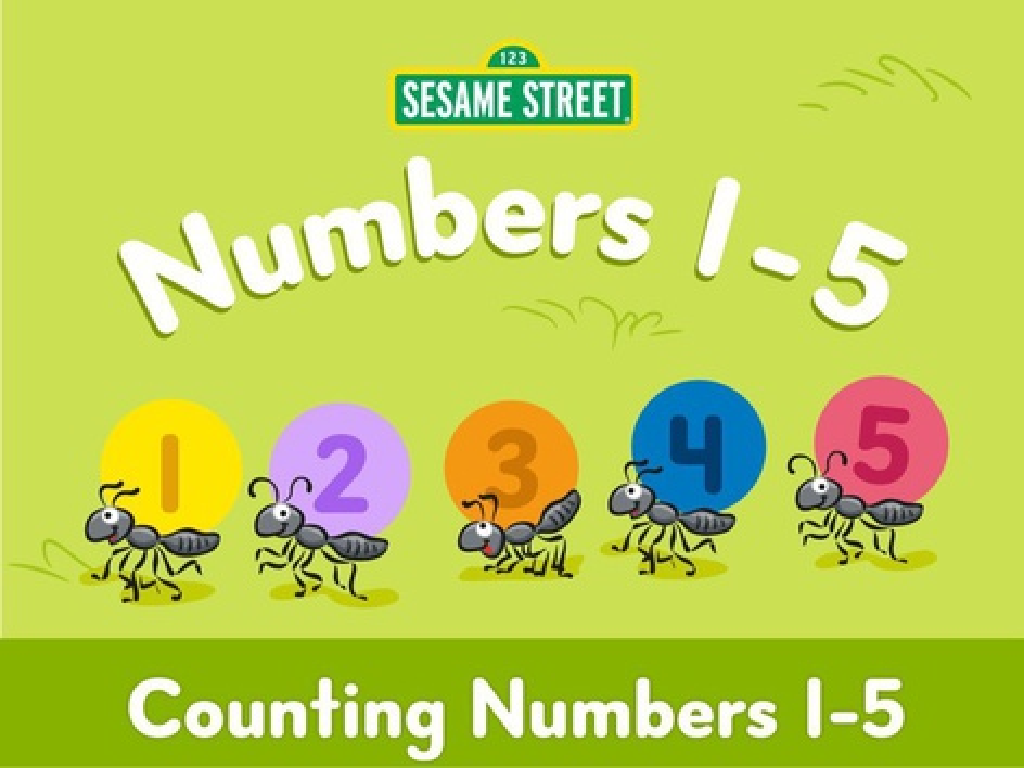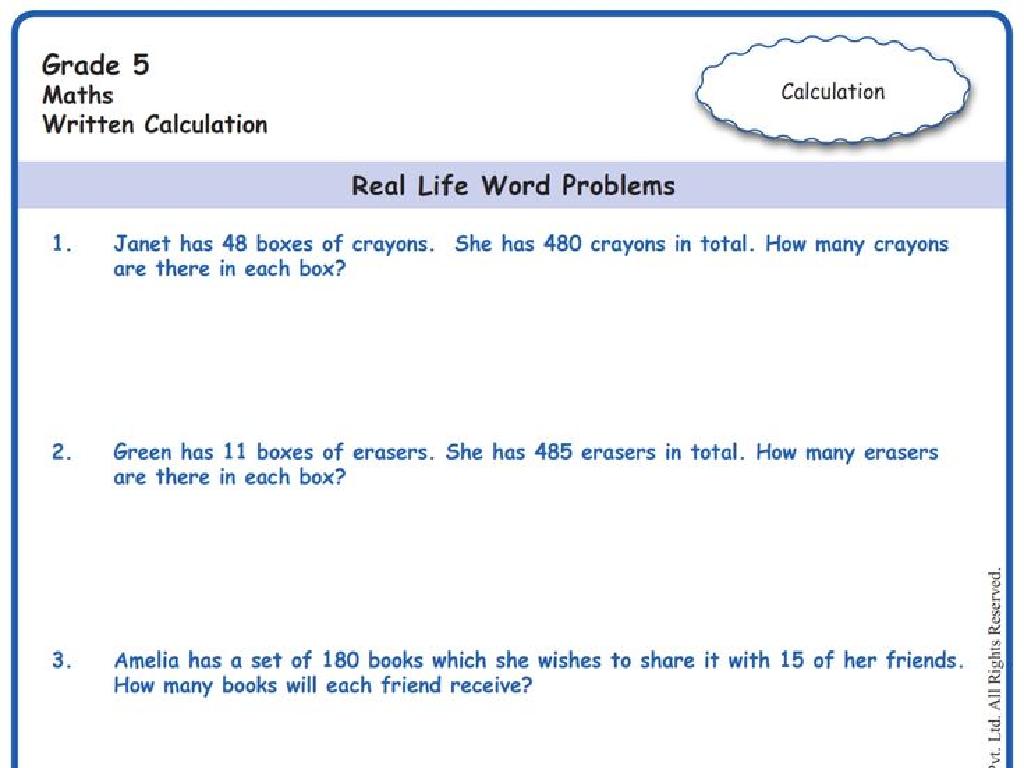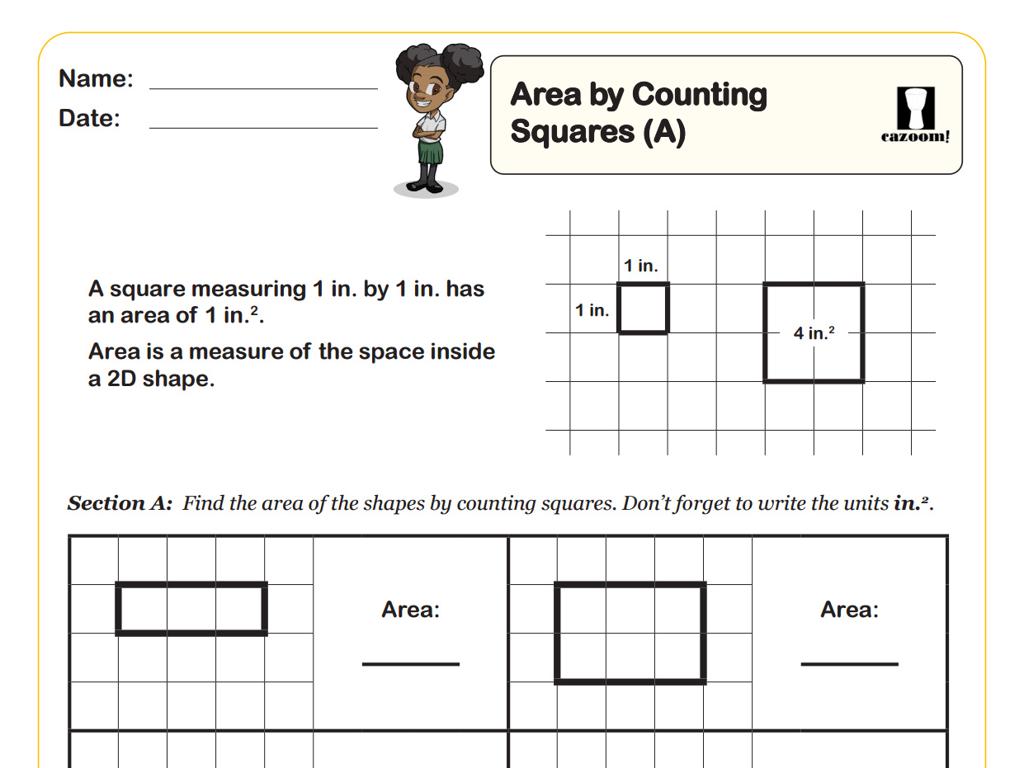Write The Subtraction Sentence - Up To Two Digits
Subject: Math
Grade: Second grade
Topic: Subtraction: Two Digits
Please LOG IN to download the presentation. Access is available to registered users only.
View More Content
Welcome to Subtraction!
– Subtraction means taking away
– Imagine cookies being eaten
– If you have 10 cookies and eat 2, how many are left?
– Writing subtraction sentences
– Subtract smaller numbers from bigger ones
– Using two-digit numbers
– Example: 34 – 15 = ?
|
This slide introduces the concept of subtraction to second graders by relating it to a relatable scenario of cookies being eaten, which helps them visualize the process of taking away. Emphasize that subtraction is simply finding out the number of items left after some are taken away. Show how to write subtraction sentences using two-digit numbers, ensuring to explain the terms ‘minuend’, ‘subtrahend’, and ‘difference’. Use examples with actual two-digit subtraction problems and solve them together. Encourage students to think of their own subtraction scenarios to share with the class.
Understanding Subtraction: Taking Away
– Subtraction means taking away
– It’s like removing items from a group
– Numbers get smaller when we subtract
– Imagine 10 apples, give away 3
– Start with 10 apples, if you give 3 to a friend
– How many apples are left?
– You subtract 3 from 10 to find out
|
This slide introduces the basic concept of subtraction to second graders. Subtraction is explained as the process of taking away from a total amount, which results in a smaller number. Use relatable examples, such as having a certain number of apples and giving some away, to illustrate the concept. Encourage students to visualize the action of subtraction to aid their understanding. Ask them to imagine scenarios where they might have to subtract in real life, like sharing snacks or toys with friends. This will help them grasp the concept of subtraction as it applies to their everyday experiences.
Subtraction Vocabulary: Key Terms
– Minuend: Starting number
– The total amount before we subtract, e.g., 10 apples
– Subtrahend: Number taken away
– The amount we remove from the minuend, e.g., 3 apples
– Difference: Result after subtracting
– What remains after subtraction, e.g., 7 apples
– Example: 10 apples – 3 apples
– 10 apples (minuend) – 3 apples (subtrahend) = 7 apples (difference)
|
This slide introduces the basic vocabulary of subtraction to second-grade students. Start by explaining that subtraction is like taking away apples from a basket. The minuend is the total number of apples we start with. The subtrahend is how many apples we decide to take out of the basket. The difference is how many apples are left in the basket. Use the example of 10 apples, taking away 3, and ending up with 7 to illustrate the concept. Encourage students to think of their own examples and to visualize the subtraction process. This will help them understand and remember these key terms as they begin to write subtraction sentences.
Writing a Subtraction Sentence
– Subtraction sentence structure
– Numbers, a minus sign (-), and an equals sign (=)
– Example: 10 – 3 = 7
– Shows taking away 3 from 10 gives us 7
– Writing sentences together
– We’ll practice with different numbers in class
|
This slide introduces the concept of writing subtraction sentences. Start by explaining the components of a subtraction sentence: numbers, a minus sign, and an equals sign. Use the example provided to illustrate how subtraction represents taking away one quantity from another. Encourage students to think of subtraction as ‘taking away’ or ‘finding the difference.’ After explaining the concept, engage the class in an interactive activity where they write subtraction sentences together. Provide them with various two-digit numbers to practice with and ensure they understand the placement of the minus and equals signs. This activity will help solidify their understanding of basic subtraction and prepare them for more complex problems.
Subtraction with Two-Digit Numbers
– Understanding borrowing concept
– When a number is too small to subtract, we borrow from the next column.
– Regrouping in subtraction
– Regrouping is borrowing from the next place value to subtract.
– Example: 54 minus 29
– Subtract ones first: 4 – 9, we need to borrow from the tens place.
– Practice regrouping together
– Let’s solve 54 – 29 step by step as a class.
|
This slide introduces the concept of borrowing, or regrouping, in subtraction when dealing with two-digit numbers. Start by explaining that sometimes the top number in the ones place is smaller than the bottom number, which means we need to borrow from the tens place. Use the example 54 – 29 to illustrate this: we cannot take 9 from 4, so we borrow 1 ten from the 5 tens, which leaves us with 4 tens and 14 ones. Then we can subtract 9 from 14, and 2 tens from 4 tens. Work through this example step by step with the class, and then provide additional practice problems for the students to try regrouping on their own or in small groups.
Practice Time: Writing Subtraction Sentences
– Try writing subtraction sentences
– Align numbers by place value
– Ones under ones, tens under tens
– Solve problems together on board
– Example: 43 – 21, write 43 above 21
– Understand subtraction process
– Grasp how to subtract two-digit numbers
|
This slide is designed for an interactive class activity where students will practice writing subtraction sentences with two-digit numbers. Emphasize the importance of aligning numbers by their place values to avoid confusion. Start by demonstrating a few examples on the board, ensuring that students understand how to properly line up the digits. Then, invite students to come up to the board to try solving problems themselves. Provide guidance and positive reinforcement as they work through the problems. For homework, assign a few additional subtraction problems for them to practice writing and solving on their own.
Let’s Play Subtraction Bingo!
– Understand ‘Subtraction Bingo’
– Solve two-digit subtraction problems
– Subtract numbers like 54 – 29
– Cover the correct answer on your bingo card
– Use counters or markers for covering numbers
– Aim for five in a row to win
|
This slide introduces a class activity called ‘Subtraction Bingo’ to help second-grade students practice two-digit subtraction in a fun and interactive way. The game is designed to reinforce their subtraction skills with numbers up to two digits. Provide each student with a bingo card that has a variety of two-digit numbers. As you call out subtraction problems, students will solve them and cover the corresponding answers on their cards. The goal is to get five correct answers in a row, either horizontally, vertically, or diagonally. Prepare a set of subtraction problems in advance and ensure there are enough bingo cards for the class. Consider having small prizes for winners to motivate participation. This activity not only makes learning subtraction enjoyable but also encourages quick mental calculation and attention to detail.
Class Activity: Subtraction Scavenger Hunt
– Find classroom objects for subtraction
– Write your subtraction sentences
– Example: If you pick 5 pencils and put 2 away, write ‘5 – 2 = 3’
– Share with the class
– Explain your solving process
– Tell us how you figured out the answer
|
This interactive activity is designed to help students understand subtraction in a fun and engaging way. Encourage them to find various items around the classroom to create subtraction problems with two-digit numbers. They should write down the subtraction sentences for the problems they create. For instance, if a student finds 12 blocks and decides to remove 3, they would write ’12 – 3 = 9′. After creating their problems, students will share their sentences with the class and explain the steps they took to solve them. This will help reinforce their understanding of subtraction and allow them to practice their problem-solving and communication skills. Possible variations of the activity could include pairing students to solve each other’s problems, using a timer to create a dynamic challenge, or incorporating a theme to match objects with a current lesson or season.
Review and Homework: Mastering Subtraction
– Review writing subtraction sentences
– Complete the homework worksheet
– Worksheet has problems on two-digit subtraction
– Practice regrouping technique
– Regroup when the top digit is smaller than the bottom digit
– Remember to check your work
|
Today’s class focused on writing subtraction sentences with two-digit numbers. For homework, students are provided with a worksheet to reinforce their learning. It’s crucial for them to practice the regrouping method, which is necessary when the digit in the ones place of the minuend (top number) is smaller than the ones in the subtrahend (bottom number). Encourage students to double-check their answers for accuracy. In the next class, we will review the homework, discuss any challenges faced, and celebrate their progress in mastering two-digit subtraction.






